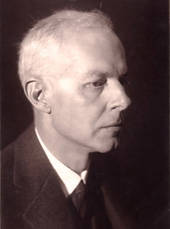

Béla Bartók
Bluebeard's Castle
Short instrumentation: 2 2 3 2 - 2 1 1 0 - perc(2), hp, pno, str (min. 2 2 2 2 1, max. 6 6 4 3 2)
Duration: 60'
Text bearbeitet von: Helmut Wagner, Karl Heinz Füssl, Eberhard Kloke
Übersetzer: Wilhelm Ziegler, Christopher Hassall
Libretto von: Béla Balázs
Bearbeitung: Eberhard Kloke
Roles:
Duke Bluebeard
baritone / Judith
mezzo-soprano / Former wives
silent
Instrumentation details:
1st flute (+picc)
2nd flute (+picc, alto fl)
1st oboe
2nd oboe (+c.a)
1st clarinet in Bb (+cl(Bb), cl(Eb))
2nd clarinet in Bb (+cl(A), cl(Eb), alto sax(Eb))
3rd clarinet in Bb (+cl(A), bass cl(Bb), cb.cl(Bb))
1st bassoon
2nd bassoon (+cbsn)
1st horn in F
2nd horn in F
trumpet in Bb
tenor-bass trombone
percussion(2)
harp
piano (+cel, synth)
violin I
violin II
viola
violoncello
double bass
Bartók - Bluebeard's Castle for soprano, baritone and chamber orchestra
Printed/Digital
Translation, reprints and more

Béla Bartók
Herzog Blaubarts BurgOrchestration: für Sopran, Bariton und Kammerorchester
Type: Studienpartitur (Sonderanfertigung)
Language: Ungarisch

Béla Bartók
Herzog Blaubarts BurgOrchestration: für Sopran, Bariton und Kammerorchester
Type: Klavierauszug (Sonderanfertigung)
Language: Deutsch | Englisch | Ungarisch

Béla Bartók
Herzog Blaubarts BurgOrchestration: für Sopran, Bariton und Kammerorchester
Type: Dirigierpartitur (Sonderanfertigung)
Language: Deutsch | Englisch | Ungarisch
Sample pages
Work introduction
The focal concern in making a transcription of Bartók’s Bluebeard for soprano/mezzosoprano, baritone and small orchestra was to provide a practical alternative for performance, while fundamentally retaining his score. The putative loss of “large-scale opera” is countered by a radical, compositional sonic substance in the sense of fine tuning between the soloists and the markedly reduced orchestra.
In the foreground are technical advantages in the variable casting alternatives in terms of lighter voices, which benefits textual comprehensibility and transparency and thus also fundamentally corresponds to the musical-theatrical design. Furthermore, extension and compression of the sound is achieved by the variable deployment of several instruments (the woodwinds in particular) for one player each.
The orchestra is compressed to the size of a small one. The focus of the orchestration is on the winds, with the addition of harp, celesta, nuanced percussion and an economically and expressively deployed string quintet.
The notation basically follows conventional practice, whereby accidentals apply for the duration of a bar. The notation (accidentals) is simplified where it seemed possible. Bartók’s practice of frequently using double sharps and flats has been retained since it seemed absolutely necessary because of the harmonic structure.
With a view to a continuative performance practice, additional theatrical concentration and compression was achieved by eschewing the classic separation of stage and audience; the small orchestra can be positioned on, beside or behind the stage – at the least, the orchestra pit could also be dispensed with, to the benefit of variable orchestra positioning.
Instrumental particulars of the transcription:
The use of three instruments – alto flute, alto saxophone and contrabass clarinet – is new.
A synthesiser is suggested for the organ part; it can be played from the piano.
The variable use of several instruments (woodwinds especially) played by one musician has already been mentioned. A significant example: the close of the opera, in which the alternation of the clarinet instruments ( B-flat, A, E-flat, bass and contrabass) and the change of sound colour take up the retrospective mood and recall the corresponding dramatic passages.
The saxophone is used sparingly to underscore the effect of the emphasised parts.
The contrabass clarinet takes the quasi “archaising” role in the score, just as if allegorically recalling the past and, evoking the future in its sonic technique.
Eberhard Kloke, Berlin, December 2018
